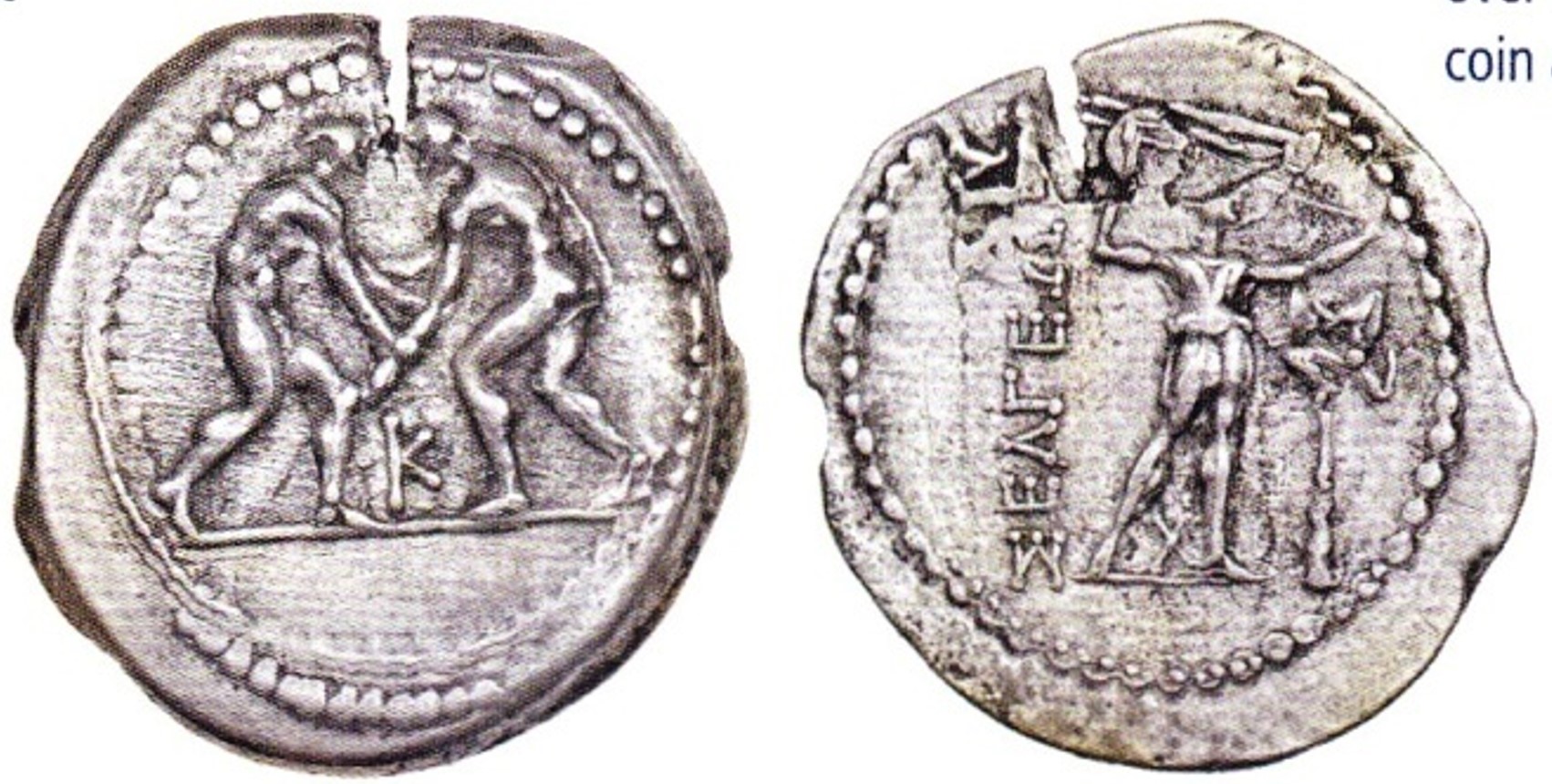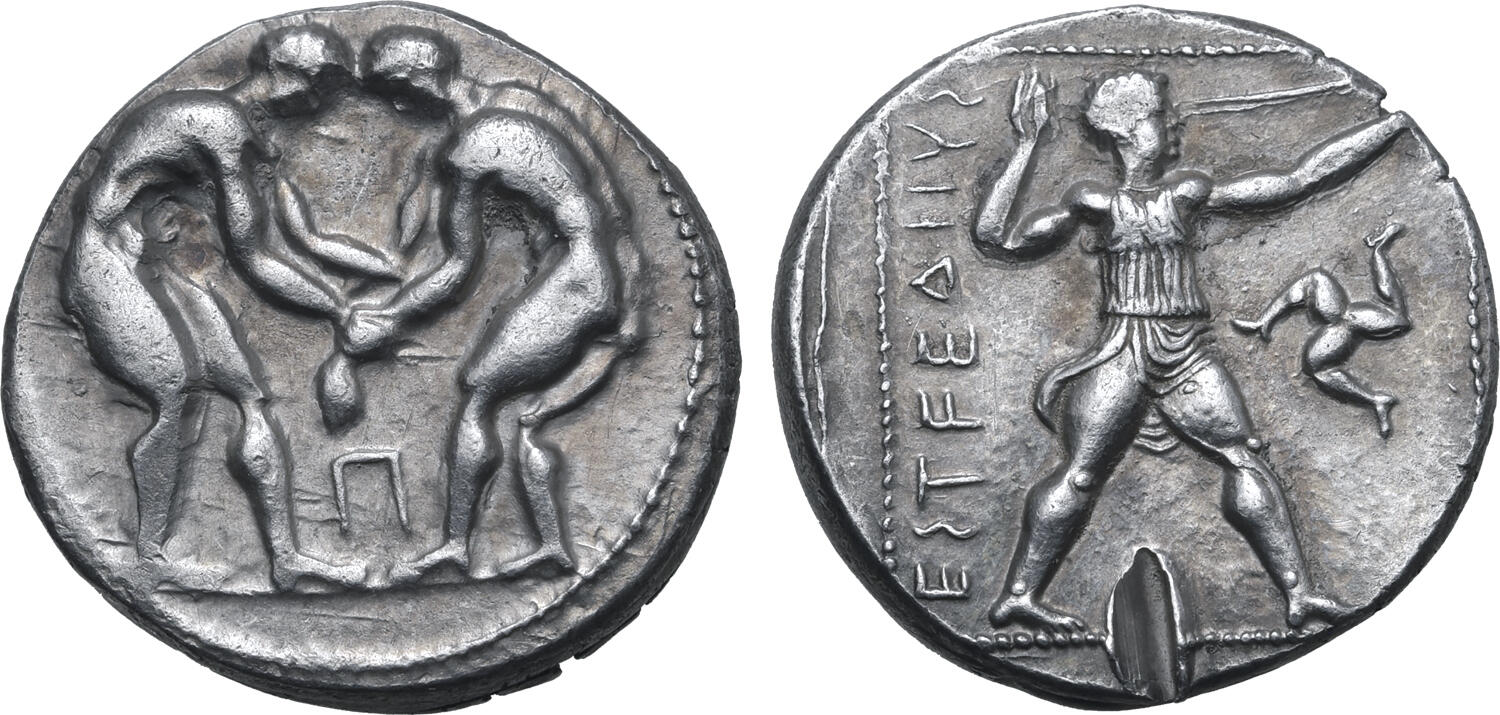300 BCE - 190 BCE | ΣΕΛΓΕΩΝ
Overstriking coin
Selge_2563_MacDonald.jpg
Overstruck variety
Aspendos.jpg
Description
| ObverseInscription or printing placed on the obverse.:
|
Two naked athletes wrestling. Between them, K. Border of dots.
|
ReverseInscription or printing placed on the reverse.:
|
ΣΕΛΓΕΩΝ (Greek) Slinger advancing right. In field, triskeles above club. Between the legs, X. Border of dots.
|
Mint and issuing power
| MintIdentifies the place of manufacture or issue of a numismatic object.:
|
Selge
|
Ancient regionAncient region.
|
Pisidia
|
Modern countryModern country: Turkey
|
AuthorityIdentifies the issuing power. The authority can be "pretended" when the name or the portrait of X is on the coin but he/she was not the issuing power. It can also be "uncertain" when there is no mention of X on the coin but he/she was the issuing power according to the historical sources:
|
|
Chronology
| FromIdentifies the initial date in a range assigned in a numismatic context. 300 BCE toIdentifies the final date in a range assigned in a numismatic context.. 190 BCE
|
Hellenistic 323-30 BC  periodTime period of the numismatic object. periodTime period of the numismatic object.
|
Physical description
MetalThe physical material (usually metal) from which an object is made.: Silver 
|
WeightWeight of the numismatic object (in grams). in grams: 10.5410.54 g <br />10,540 mg <br />
|
DenominationTerm indicating the value of a numismatic object. Examples: tetradrachm, chalkous, denarius.: double siglos 
|
AxisDescribes the directional relationship between the obverse and reverse of a numismatic object.: 11 mm <br />0.1 cm <br />
|
|
|
StandardStandard.: Persian
|
References
Description
| ObverseInscription or printing placed on the obverse.:
|
Two naked athletes wrestling (visible: portion of border of dots).
|
ReverseInscription or printing placed on the reverse.:
|
[EΣTFE]ΔIV[Σ] Slinger advancing right (visible on reverse: head, arms, sling, traces of body, club and traces of triskeles, portion of dotts, ΔIV)
|
Mint and issuing power
Chronology
| FromIdentifies the initial date in a range assigned in a numismatic context. 380 BCE toIdentifies the final date in a range assigned in a numismatic context.. 332 BCE
|
Classical 480-323 BC  periodTime period of the numismatic object. periodTime period of the numismatic object.
|
Physical description
| DenominationTerm indicating the value of a numismatic object. Examples: tetradrachm, chalkous, denarius. ᵖ:
|
double siglos 
|
|
|
References
References
- a b SNG Paris Pamphylie
- ^ Macdonald, David (2009), Overstruck Greek coins: studies in Greek chronology and monetary theory, Whitman Publishing, Atlanta.

